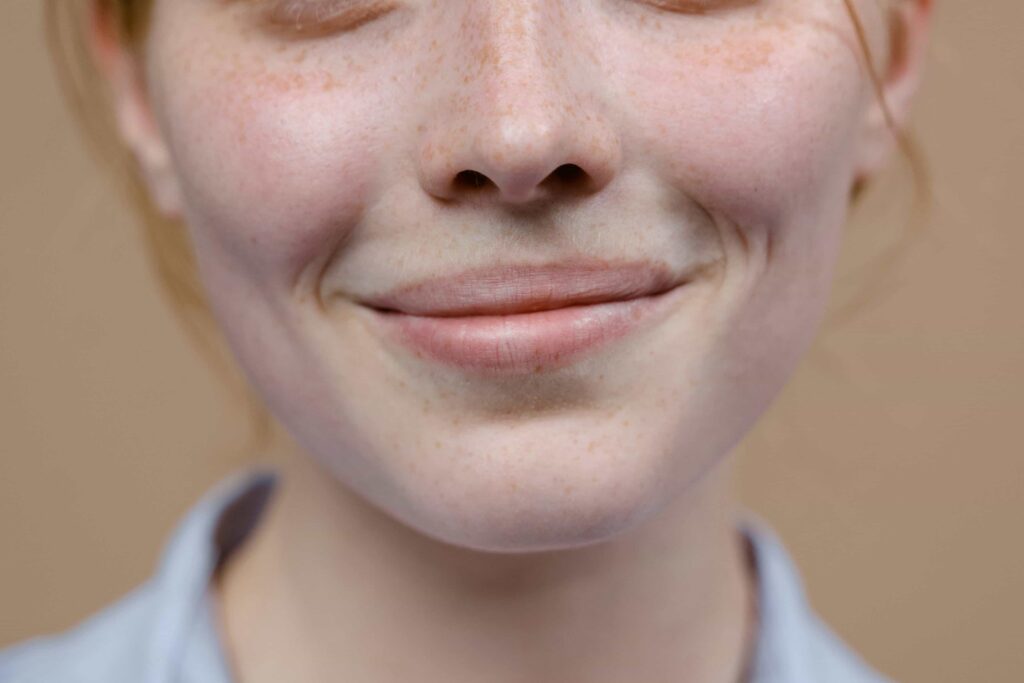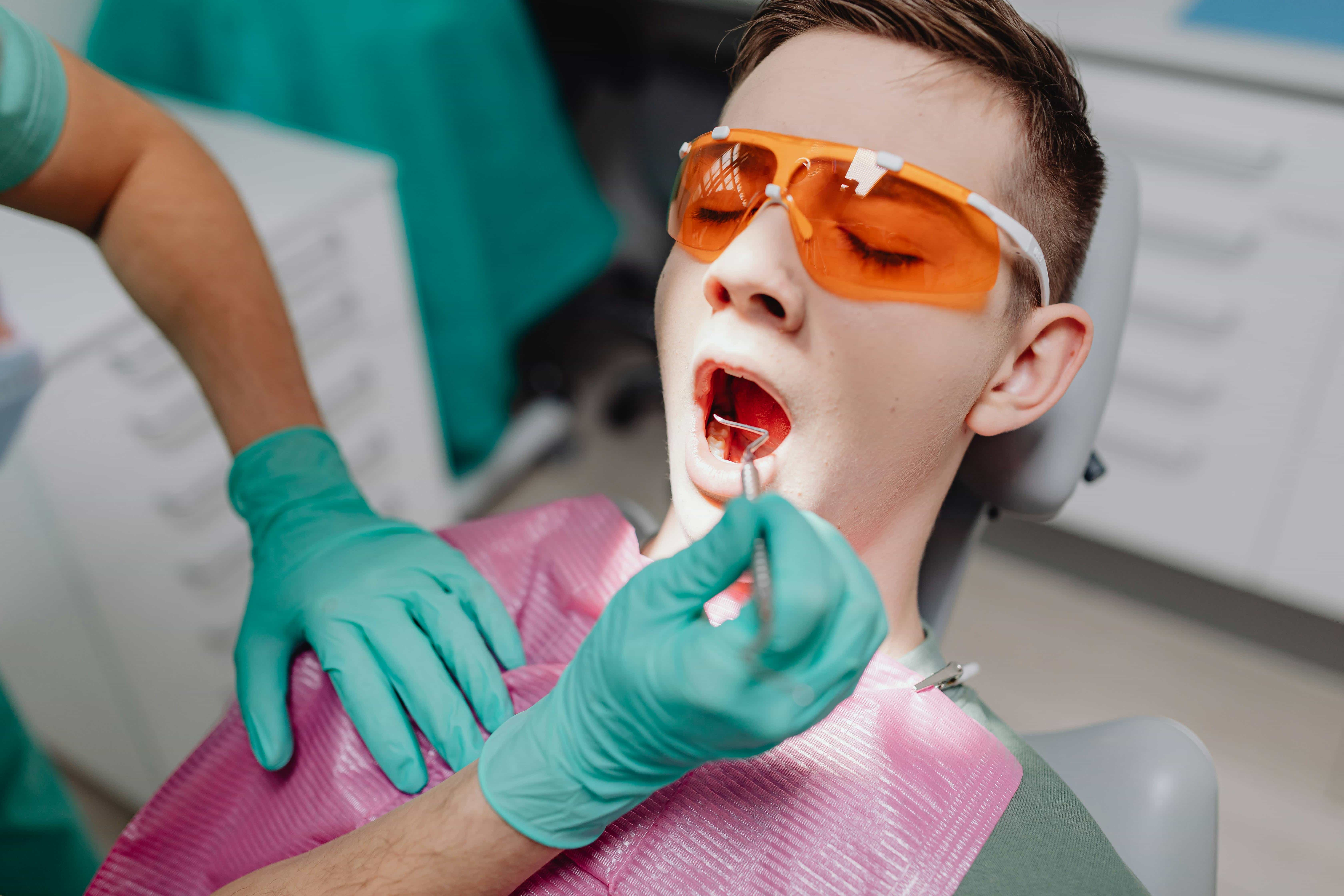Mouth breathing is more than just a habit; it can have lasting effects on facial structure, appearance, and even overall health. Known as “mouth breather face,” this condition often develops over time, especially in children, if mouth breathing becomes chronic.
Thankfully, it’s reversible with the right steps and guidance. This guide will explain what mouth breather face is, its effects, and how you can fix it.
Let’s take a look.
Key Takeaways
- Mouth breathing can have negative effects on facial development and overall health
- Orthodontic treatment can help correct mouth breather face
- Early intervention is important for optimal results
- Proper breathing techniques and regular orthodontic check-ups can prevent future issues
- Consulting with an orthodontist can provide personalized solutions for individual needs

What Is Mouth Breather Face?
Mouth breather face refers to changes in facial structure caused by habitual mouth breathing. Chronic mouth breathing, whether due to allergies, nasal obstructions, or habit, can cause the following symptoms over time:
- A longer, narrower face
- A recessed chin or jawline
- Drooping eyes
- Flat cheeks
- Poorly aligned teeth
The main issue is that mouth breathing disrupts normal tongue posture, which affects the growth and alignment of the jaw and surrounding facial features.
The Effects of Mouth Breathing on the Face and Jaw
Mouth breathing can cause a number of changes to the face and jaw over time. One of the most noticeable effects is a longer, narrower face. This is due to the constant downward pressure from the tongue when it is not in its proper resting position on the roof of the mouth.
As a result, the upper jaw does not develop properly and becomes smaller, creating a long and narrow appearance to the face.
In addition, mouth breathing can also lead to a recessed chin or jawline. When breathing through the mouth, there is less support for the muscles in this area, causing them to become weaker and leading to a more pronounced chin recession. This can also affect facial symmetry
Now, the question arises: how do you fix it?
How to Fix Mouth Breather Face
By identifying the underlying causes and adopting specific techniques or treatments, it is possible to improve both function and appearance, helping to restore balance and symmetry to the face.
Here are some of the best ways to fix “mouth breather face”.
1. Identify the Cause of Mouth Breathing
Before addressing the condition, finding the underlying cause is essential. Common causes include nasal congestion, allergies, sleep apnea, or anatomical obstructions such as enlarged tonsils.
Consult a healthcare professional, such as an ENT (Ear, Nose, and Throat Specialist) or an orthodontist like Dr. Ryan Pendleton at Pendleton Orthodontics, to diagnose and treat any underlying issues effectively.
2. Practice Nasal Breathing
Encourage nasal breathing to allow proper tongue posture and activate the natural growth patterns of facial bones.
Here’s how to start transitioning back to nasal breathing:
- Clean Your Nasal Passages: Use nasal sprays or humidifiers to keep nasal passages clear and open.
- Breathing Exercises: Techniques such as “Buteyko Breathing” can help strengthen your nasal breathing habit.
3. Improve Tongue Posture
Proper tongue posture involves resting the tongue on the roof of the mouth with lips closed and teeth slightly apart. This correct placement helps promote proper jaw alignment and facial development.
Orthodontic treatments like Invisalign or metal braces at Pendleton Orthodontics can play a role in correcting misaligned teeth caused by improper tongue posture.
4. Try Myofunctional Therapy
Myofunctional therapy involves exercises that strengthen facial and tongue muscles to retrain breathing patterns and improve overall orofacial health.
A therapist can guide you on exercises to correct tongue posture and relieve strain in facial muscles, helping reverse some of the effects of mouth breather face.
5. Fix Dental and Orthodontic Issues
If mouth breathing has led to orthodontic issues such as overcrowding, overbites, or underbites, orthodontic solutions like:
- Braces or Invisalign
- Clear aligners
- Expanders (especially for children)
- V-Pro mouthpiece
These can gradually fix jaw alignment and restore balance to facial features.
6. Encourage Lifestyle Changes and Early Interventions
For kids developing mouth breather face, early intervention can significantly improve outcomes. Parents can address the condition by encouraging:
- Mouth taping during sleep (consult your doctor),
- Removing allergens or tackling nasal blockages,
- Keeping up regular orthodontic visits to monitor facial development.
These interventions can reduce the likelihood of mouth breather face in children by promoting healthy breathing habits.
Can Mouth Breather Face Be Fully Corrected?
Yes! But the key to success lies in early detection and consistent treatment. While structural changes may take time, combining orthodontics, myofunctional therapy, and conscious breathing practices can make a noticeable difference in appearance and function.
Partnering with the Right Orthodontist
Whether you’re addressing early signs of mouth breather face in your child or dealing with it yourself, consulting an experienced orthodontist is a crucial step in your treatment plan. At Pendleton Orthodontics, we’re committed to providing personalized care to help correct this condition.
With cutting-edge technology like Invisalign, LightForce clear braces, and procedures focused on fast, pain-free treatments, Dr. Pendleton and his team are here to transform your smile and overall facial harmony.
Schedule a consultation today to learn more about how we can help you or your child achieve optimal oral health and function.

FAQ
Q: What is “mouth breather face”?
A: “Mouth breather face” refers to the appearance of a person’s facial features that may be caused by chronic mouth breathing. It typically includes a narrow jaw, recessed chin, and flatter cheeks.
Q: How can you fix mouth breather face?
A: The best way to fix mouth breather face is to address the underlying cause of chronic mouth breathing, such as enlarged tonsils or an airway obstruction. Orthodontic treatment can also help improve jaw positioning and facial structure.
Q: Can orthodontic treatment help with mouth breathing?
A: Yes, orthodontic treatment can help with mouth breathing by correcting any dental or skeletal issues that may be causing it. This can lead to improved nasal breathing and overall health benefits.
Q: How do I know if I or my child is a mouth breather?
A: Signs of chronic mouth breathing include snoring, dry lips, bad breath, and difficulty swallowing. A consultation with an orthodontist can also help determine if mouth breathing is an issue.
Invest in Better Breathing and a Healthier Smile Today
Addressing mouth breathing early can have a profound impact on both appearance and overall health. With proper orthodontic care and guidance on how to fix mouth breather face, you or your child can achieve not only a healthier smile but also improved breathing and quality of life. Consult with an orthodontist today to explore tailored solutions for your needs.
If you’re ready to take the first steps towards correcting mouth breather face or want more personalized advice, schedule a free consultation during your first visit to Pendleton Orthodontics.
It’s never too late to improve your facial structure, confidence, and health. Don’t wait; start your journey to a better you today!
